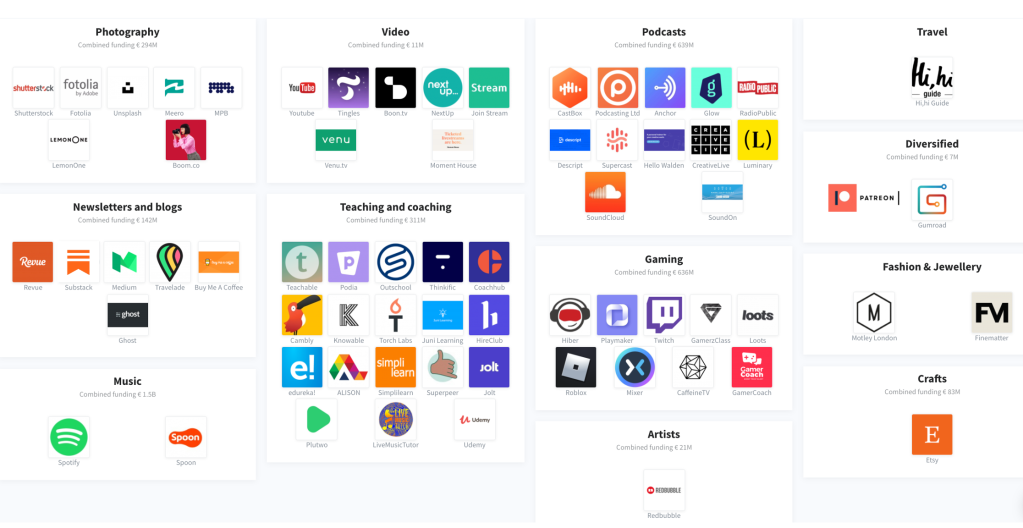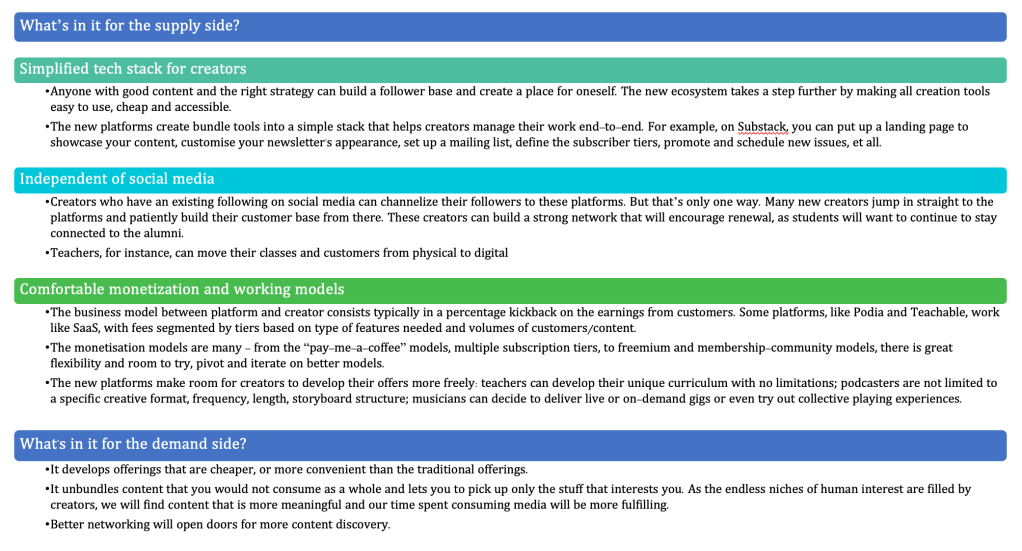I’ve been doing some reading and research on Passion Economy, which led me to this fifteen-year-old article by Editor-in-Chief of Wired, Chris Anderson, from where the term “The Long Tail” came to life.
Big markets in small sums — Drawing from Anderson’s observations
The documentary Touching the Void which was a box-office hit, but before its success, the printed version had withered away on bookshop shelves. Despite being well-reviewed, sales dwindled, and it was eventually pulled off from the shelves and forgotten. Anderson points out that the book, published in 1988, had seen very modest sales. Ten years later, Into Thin Air, a book by Jon Krakauer, about a mountain-climbing tragedy, was published and sold on Amazon. This book scaled the best-seller lists, and some readers wrote reviews noting the similarities of the two books and urging other amazon users to pick up Touching the Void. In due course, Amazon’s algorithms took over, noting the buying patterns and recommending the same to buyers of Into Thin Air. Swiftly, Touching the Void was selling in multitudes. Today Touching the Void outsells Into Thin Air, 2:1.
In the music and entertainment industry, high barriers to content production and distribution from record labels have been making content boring and skewed. For profitable ROI, the upfront costs and advances are first recouped from revenue and royalties, which motivates optimizing for “hits.” Hits are motivated by whatever will please the masses — they play to the common denominator, not the niches. But with the internet as a vast tool serving amplified recommendations, consumers can discover through the metadata and filtering, that their tastes may not be as mainstream as they once thought.
For this new era of online economics, Anderson has coined the term “The Long Tail”, based on a graph that charts entertainment-industry sales. With mainstream sales grouped at the graph’s top left, a long tail of remnants trails off towards the right. This is the long tail of niches that is, collectively, worth more than the blockbusters and bestsellers.The Long Tail is big markets in small sums. Combine enough non-hits on the long tail and you have a market bigger than hits.
Trends manifesting into Passion Economy
Recently a new class of distribution channels and their accompanying business models (YouTube, Substack, Patreon, Instagram, Teachable) have allowed individual creators to bypass the legacy institutions and capture more of the value for themselves. These and other digital platforms and technology entail that people are now technology-empowered to financially sustain themselves through niche skill-sets that they have. This gives creators a chance to live off their unique skills. To better illustrate, the rise of podcasting well epitomizes the relevance of this framework. By better catering to a smaller audience, creators can increase engagement and monetization. This means they are free to cater to a much smaller audience. If you can establish a direct relationship with your more narrow audience, you don’t have to produce a hit, you just need to please, as Kevin Kelly says, 1,000 true fans, or as Li Jin argues, 100. The above trends manifest into the passion economy.
In this ecosystem, passionate individuals and knowledge professionals can make money out of their talents and turn passions into a livelihood by developing a direct relationship with their audience and customers. The better you cater for a smaller audience, the more you will get value out of that. That is the promise of the passion economy: making the long-tail profitable for the long-tailers, not for the marketplace owner.
Platforms and Creator tools in the Ecosystem
Some passion economy companies have been around for long, like YouTube. But many others are just getting started. For instance, Spotify also does podcasts and YouTube also offers courses. There are two mediums in passion economy, SAAS platforms and Marketplace. The below chart showcases some categories, but in reality, they overlap.

Market Size is the big question
A friend who’s building a SAAS platform for virtual artist performances called me the other day to ask about the potential market sizing, and I attempted to arrive at the number, only to stop when I hit upon this in Li Jin’s blog, where she quotes from one of Christensen’s findings on disruption — forecasting the market size for disruptive technologies is tremendously challenging to the point of impossibility. Markets that do not exist cannot be analyzed. The same analytical techniques for forecasting the market size of sustaining technologies fail when applied to markets that don’t yet exist. Take the case of Uber: its original pitch deck forecasted a best-case scenario of $1Bn annual revenue; in reality, Uber’s 2019 full-year gross bookings were $65 billion.
Let’s explore about the incentives for the Supply and Demand pool

While the passion economy is nascent, it is by no means small — For instance, Ninja will draw a stadium’s worth of concurrent viewers on a good day (he averages over 38k), in 2018 a 7-year-old reportedly earned himself 22 million due to the ad revenue from the sheer numbers of his viewership on Youtube. His passion? Reviewing toys. Amateur gamers are being paid to game and broadcast. Even the relatively unknown “StoneMountain64” might have earned up to $500k.
In these uncertain times, overshadowed by COVID-19, this shift is now accelerating — One of the most shared news about the passion economy involves Patreon, the subscription service for creators. In March, 50,000 new artists joined the platform resulting in an unprecedented spike in patrons of 36% month on month across the US, the UK, Canada, Germany, Australia and Italy. Meanwhile Substack, the fast-growing subscription newsletter platform boasts around 100,000 paying subscribers to its creators there. Substack’s 12 top-earning writers make an average of more than $160,000 each, the company told BuzzFeed News. It’s clear from these metrics that today’s creative sees their pay check increasingly coming from fans. We see broadcasts of individual knowledge and skills from a vast array of differentiated people and specialised fields. This is the dawn of the higher echelon of the Maslow pyramid of needs/skills/people. It’s open season and it looks like, in 2020, business is going to be booming


